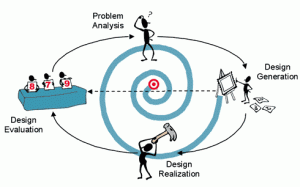In requirements gathering, user experience researchers gather information to lay groundwork for additional research, inform design, direct development, and provide test goals. During requirements gathering, researchers investigate the tasks and goals of your target audiences to establish functional and usability objectives for the application, or website. The qualitative data from this phase is richer and more detailed than information from traditional marketing methods alone.
Requirements Gathering Objectives
- Establish a deep understanding of the intended users and their environment
- Identify users’ unfulfilled needs
- Specify which of those needs should be met
Requirements Gathering Research Methods Uncover User Requirements and Unmet Needs
- Field Research—Interviews and observations in the user’s own environment to ground the user experience research in the context of use.
- Focus Groups—A series of structured group interviews, often with hands-on tasks involving new designs, to explore concepts and user opinions.
- User Modeling—Analyzing the characteristics of the key audiences for a product, website, or service, and creating characters or “personas” that depict examples of people who fit those profiles.
- Information Architecture Analysis—Evaluation of the information space for a product or website and identifying the components, taxonomy, and relationships.
- Task Analysis—An inventory and prioritization of the tasks that users perform with a product or application.
- Participatory Design—A series of design workshops, led by TecEd experts, in which a team of stakeholders work together to explore and evaluate design ideas. Stakeholders may include users, designers, developers, marketers, executives, and anyone else who may provide valuable perspective on the nature of the proposed application and ensure that their requirements inform the design.
Requirements gathering may occur throughout the product lifecycle. Traditional processes establish the requirements at the beginning of the process. Iterative design processes (the spiral model of design shown below), such as Agile, enable teams to respond more effectively to requirements as they emerge.



